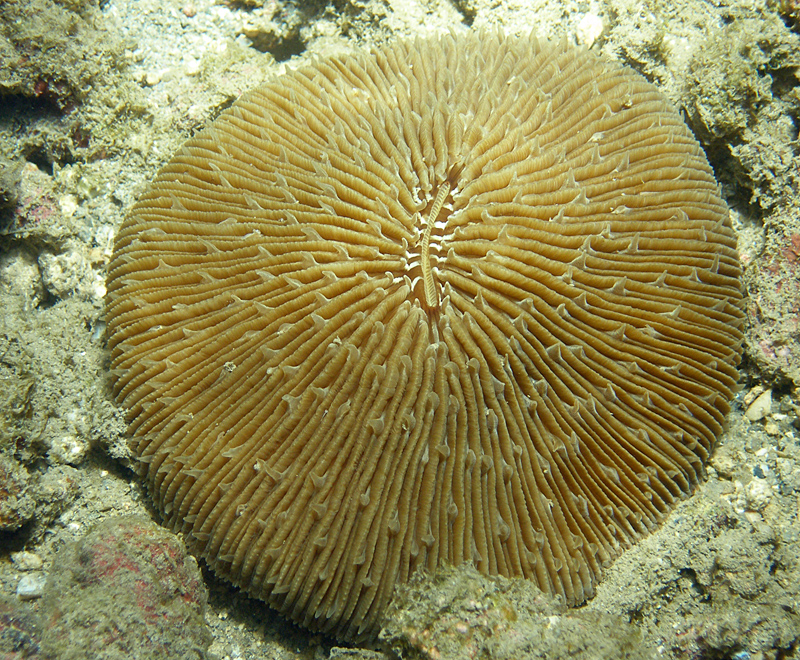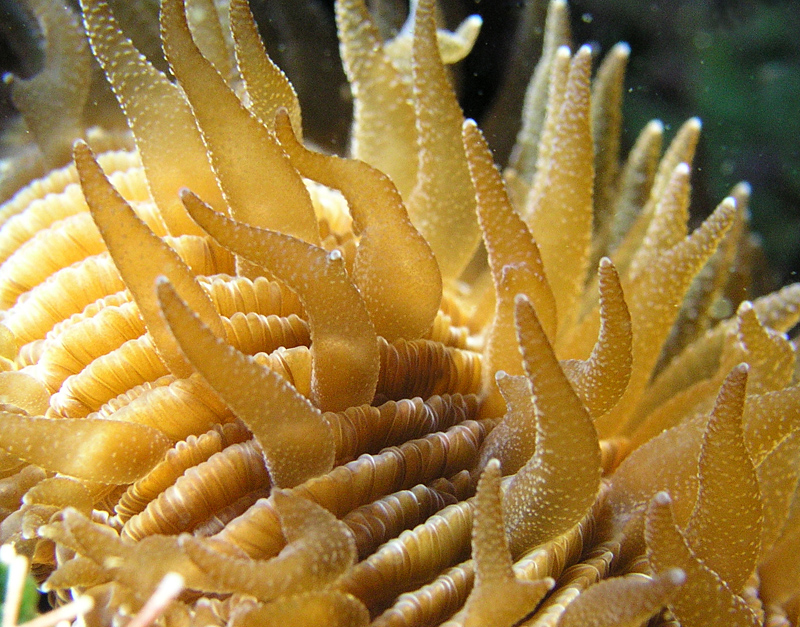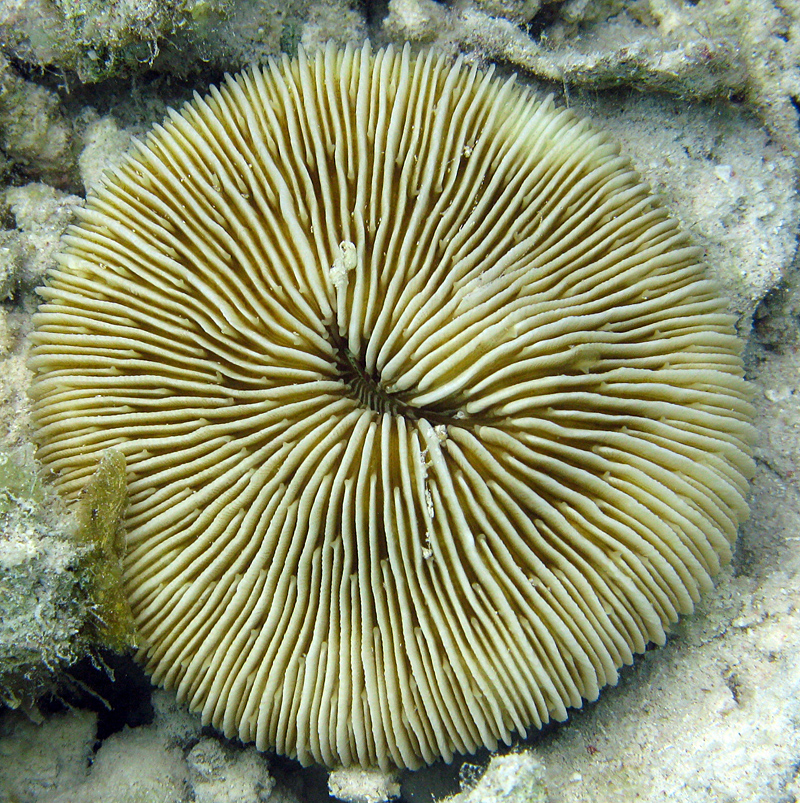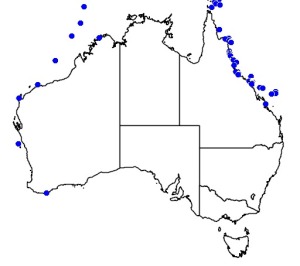�
�

©Andy: A brown specimen of Fungia repanda at Florence Bay, Magnetic Island, showing partially extended tentacles
�
���
Fungia repanda

©Andy: A brown specimen of Fungia repanda at Florence Bay, Magnetic Island, showing partially extended tentacles
Kingdom
Animalia
Phylum
Cnidaria
Class
Anthozoa
Order
Scleractinia
Family
Fungiidae
Genus
Fungia
Species
Fungia repanda
Distinguishing features
A fungid coral that forms a round skeleton up to 30cm diameter. Septal teeth are fine but visible. Colour is typically brown. Tentacles are often partially extended during the day. Distinguish from F. fungites by the finer septal teeth.
Size
- Size data has not been obtained.
Synonyms
Distribution
Distribution and habitat preferences
Reef fronts, lagoons.
Can be found in most habitats around Lizard Island.
Behaviour
F. repanda is a gonochoric broadcast spawner, however it can also reproduce asexually via budding of new individuals from the parent polyp. In Japanese populations from Okinawa, the species was shown to be protandrous. Research has been conducted into the UV absorbing compounds present in the mucous of this species, which appear to allow F. repanda to inhabit both deep and very shallow waters without damage.
Web resources
References
- Baird, A.H., R.C. Babcock and C.P. Mundy (2003). Habitat selection by larvae influences the depth distribution of six common coral species. Marine Ecology Progress Series, 252: 289-293.
- Baird, A.H., J.R. Guest and B.L. Willis (2009). Systematic and biogeographical patterns in the reproductive biology of scleractinian corals, Annual Review of Ecology, Evolution and Systematics, 40: 551-571.
- Drollet, J.H., T. Teai, M. Faucon and P.M.V. Martin (1997). Field study of compensatory changes in UV-absorbing compounds in the mucus of the solitary coral Fungia repanda (Scleractinia:Fungiidae) in relation to solar UV radiation, sea-water temperature, and other coincident physico-chemical parameters, Marine and Freshwater Research, 48: 329-333.
- View all references




